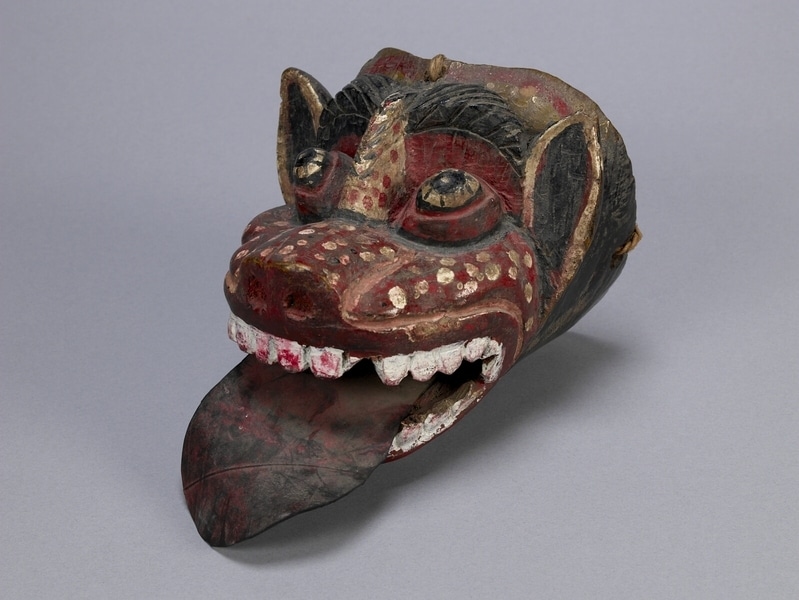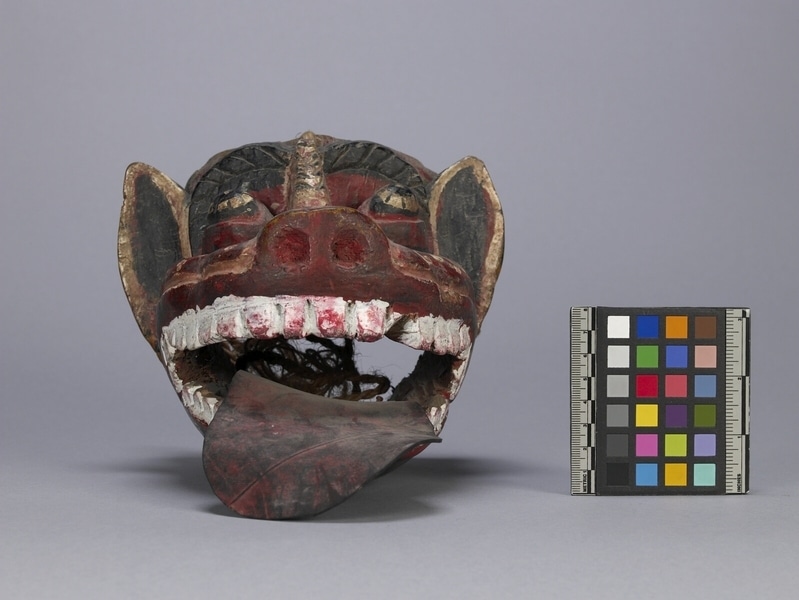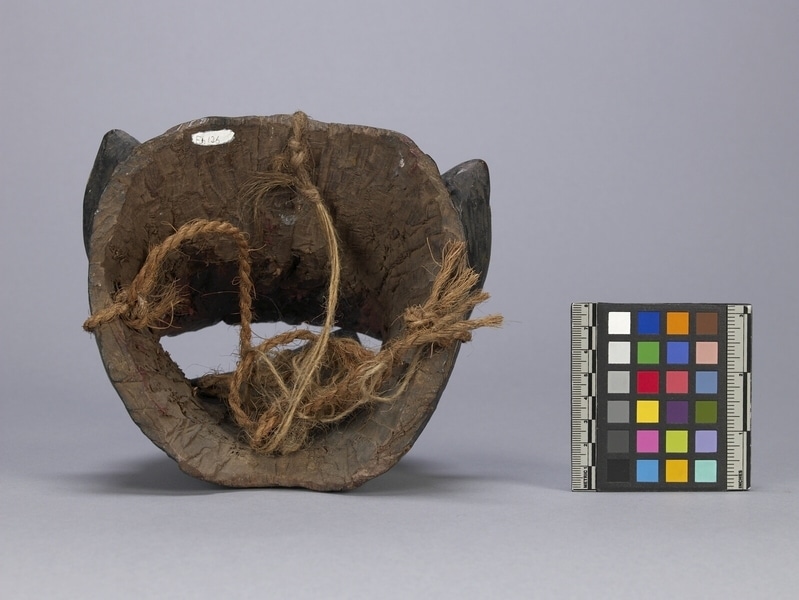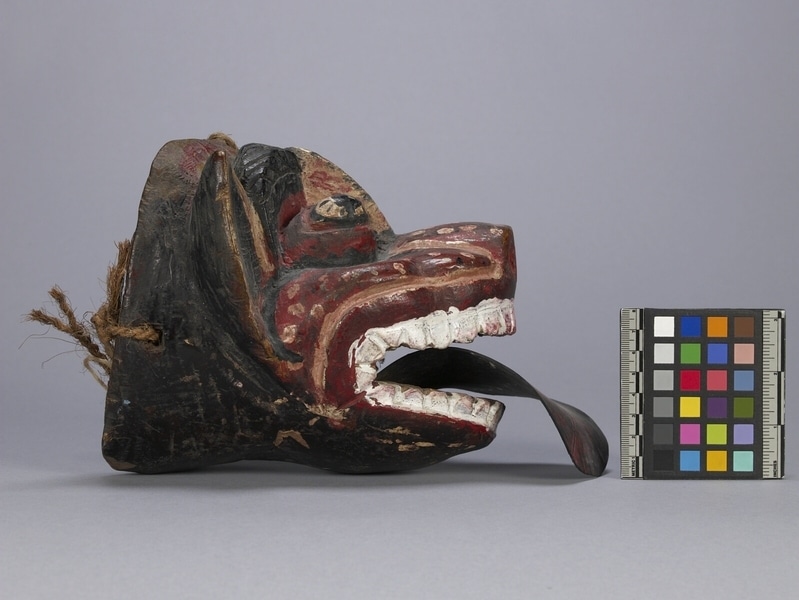Mask Item Number: Eh126 from the MOA: University of British Columbia




Description
Mask depicting a creature with a red-brown face dotted with white spots, bushy black eyebrows, protruding eyes that look upwards and have black centres surrounded by radiating black lines on white. A vertical ridge between the eyes joins a square snout with round holes for the nostrils. The mouth is wide open to expose white teeth and a wide red leather tongue, which is nailed to bottom of the jaw and protrudes out the front. Two pointy ears either side of the face.
History Of Use
Animal characters appear in the Kolam dance drama of southern Sri Lanka. Although there are no specific animal scenes, when animals appear they make appropriate noises and move to the accompaniment of a singer who describes the character. Animal masks belong to the oldest mask types, and this mask was probably used in a story involving an ox and a leopard. Kolam masks are not made to be spoken through but to impress and convey emotion by the expression of the mask itself.
Cultural Context
ritual exorcism
Iconographic Meaning
Spots indicate the animal character most likely portrayed would be the leopard or diviya, used in Sinhalese for both tiger and leopard, also known as koti.
Item History
- Made in Galle, Sri Lanka before 1983
- Collected during 1983
- Owned by Jason Schoonover before June 21, 1984
- Received from Museum of Anthropology Shop Volunteers (Funding source) and Jason Schoonover (Seller) on June 21, 1984
What
- Name
- Mask
- Identification Number
- Eh126
- Type of Item
- mask
- Material
- leather skin, wood, paint and plant fibre
- Manufacturing Technique
- carved and painted
- Overall
- height 16.0 cm, width 18.5 cm, depth 25.5 cm
Who
- Culture
- Sinhalese
- Previous Owner
- Jason Schoonover
- Received from
- Museum of Anthropology Shop Volunteers (Funding source) and Jason Schoonover (Seller)
Where
- Holding Institution
- MOA: University of British Columbia
- Made in
- Galle, Sri Lanka
When
- Creation Date
- before 1983
- Collection Date
- during 1983
- Ownership Date
- before June 21, 1984
- Acquisition Date
- on June 21, 1984
Other
- Condition
- good
- Accession Number
- 0972/0016